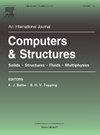Metamodeling for robust design of energy harvesting devices using polynomial chaos expansion and artificial neural networks
IF 4.4
2区 工程技术
Q1 COMPUTER SCIENCE, INTERDISCIPLINARY APPLICATIONS
引用次数: 0
Abstract
The generation of electrical energy using piezoelectric devices represents a promising alternative due to the high charge density these materials can generate. Cantilever beam devices modeled using finite element methods are commonly used in studies focused on the conversion of mechanical energy into electrical energy. With this, the influence of specific variables and parameters can be analyzed through the Frequency Response Function (FRF) of power output. In the search for optimal solutions, it is important to consider uncertainties in parameters in order to design robust devices. Due to the high computational cost of robustness analysis, particularly when considering the mean and relative dispersion, the generation of computational metamodels becomes interesting for their characteristics. This work aims to develop and evaluate a metamodeling approach for the mentioned FRF using polynomial chaos expansion and artificial neural networks, assessing which method provides better accuracy. After the analysis, a method is chosen to generate the metamodel and multi-objective optimization with algorithm NSGA-II is applied to maximize the mean and minimize the dispersion of FRF. The results demonstrate that metamodels can effectively approximate the outcomes obtained from the original function in scenarios characterized by significant uncertainties, with relatively low computational effort.
基于多项式混沌展开和人工神经网络的能量收集装置鲁棒设计元建模
利用压电装置产生电能是一种很有前途的选择,因为这些材料可以产生高电荷密度。用有限元方法建模的悬臂梁装置通常用于研究机械能到电能的转换。这样,就可以通过功率输出的频响函数(Frequency Response Function, FRF)来分析特定变量和参数的影响。在寻找最优解的过程中,考虑参数的不确定性是设计鲁棒器件的重要因素。由于鲁棒性分析的计算成本很高,特别是在考虑均值和相对离散时,计算元模型的生成因其特性而变得有趣。本研究旨在利用多项式混沌展开和人工神经网络开发和评估上述FRF的元建模方法,评估哪种方法提供更好的准确性。分析后,选择了一种生成元模型的方法,并采用NSGA-II算法进行多目标优化,使频响均值最大化,离散度最小化。结果表明,在具有显著不确定性的情况下,元模型可以有效地逼近原函数的结果,且计算量相对较少。
本文章由计算机程序翻译,如有差异,请以英文原文为准。
求助全文
约1分钟内获得全文
求助全文
来源期刊

Computers & Structures
工程技术-工程:土木
CiteScore
8.80
自引率
6.40%
发文量
122
审稿时长
33 days
期刊介绍:
Computers & Structures publishes advances in the development and use of computational methods for the solution of problems in engineering and the sciences. The range of appropriate contributions is wide, and includes papers on establishing appropriate mathematical models and their numerical solution in all areas of mechanics. The journal also includes articles that present a substantial review of a field in the topics of the journal.
 求助内容:
求助内容: 应助结果提醒方式:
应助结果提醒方式:


